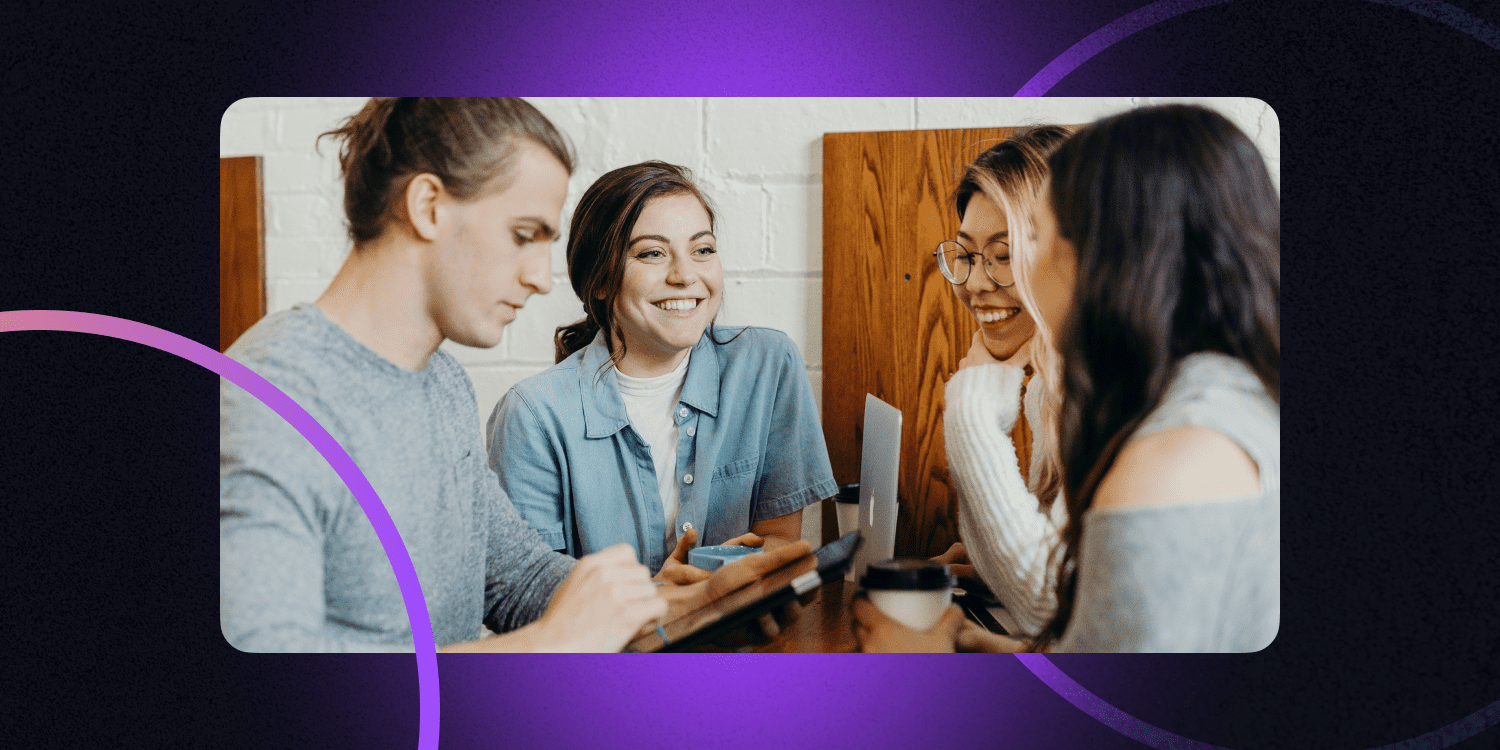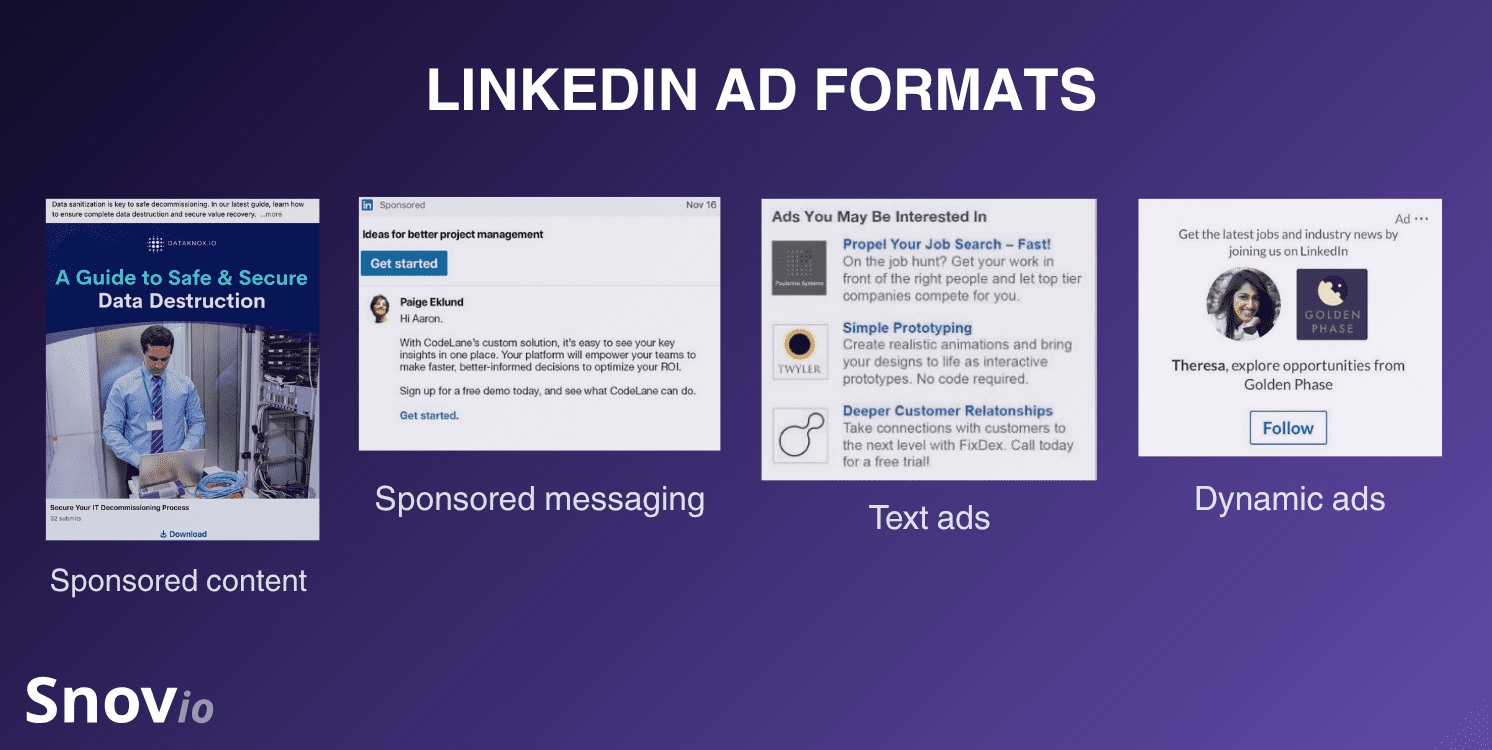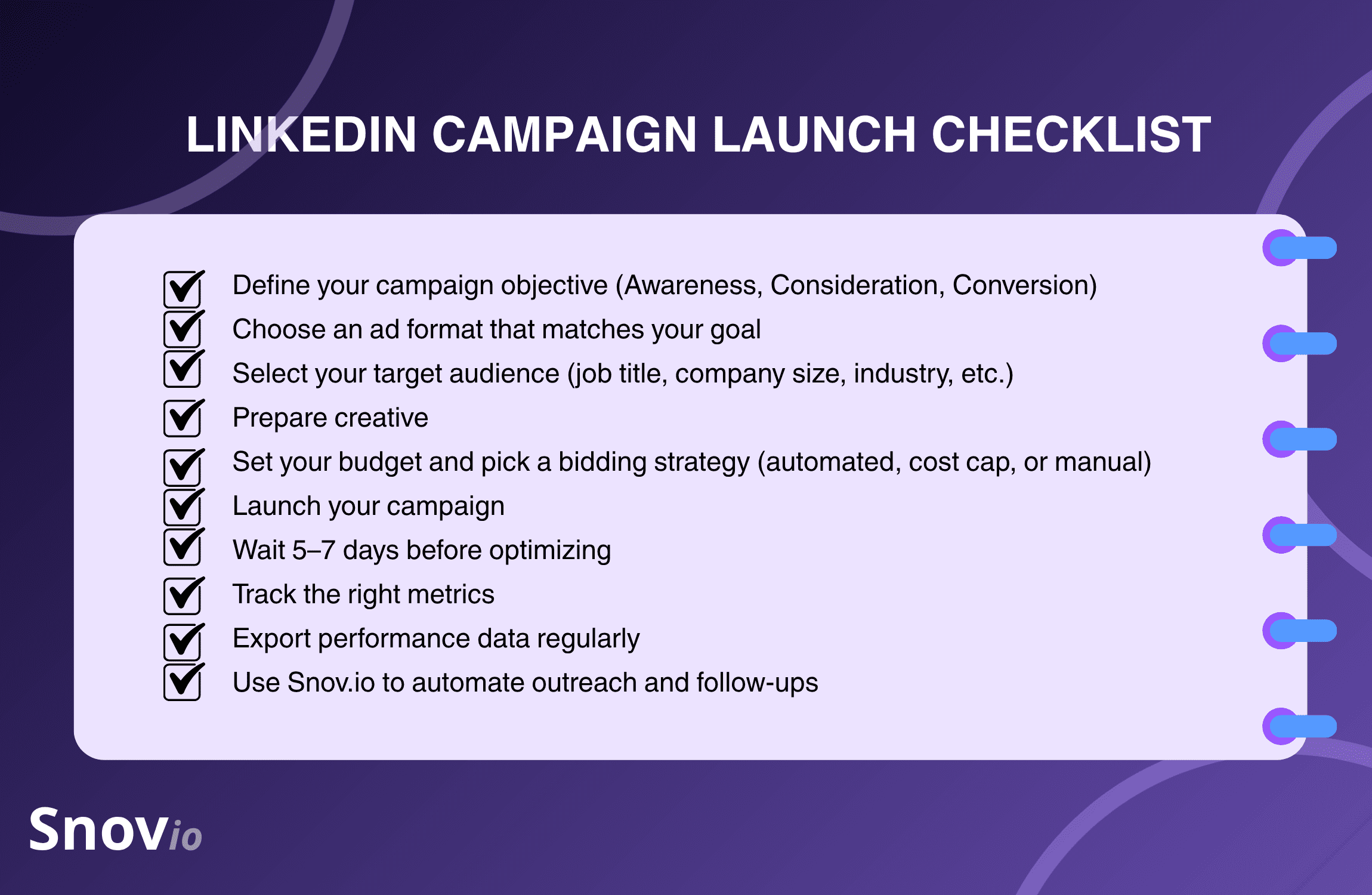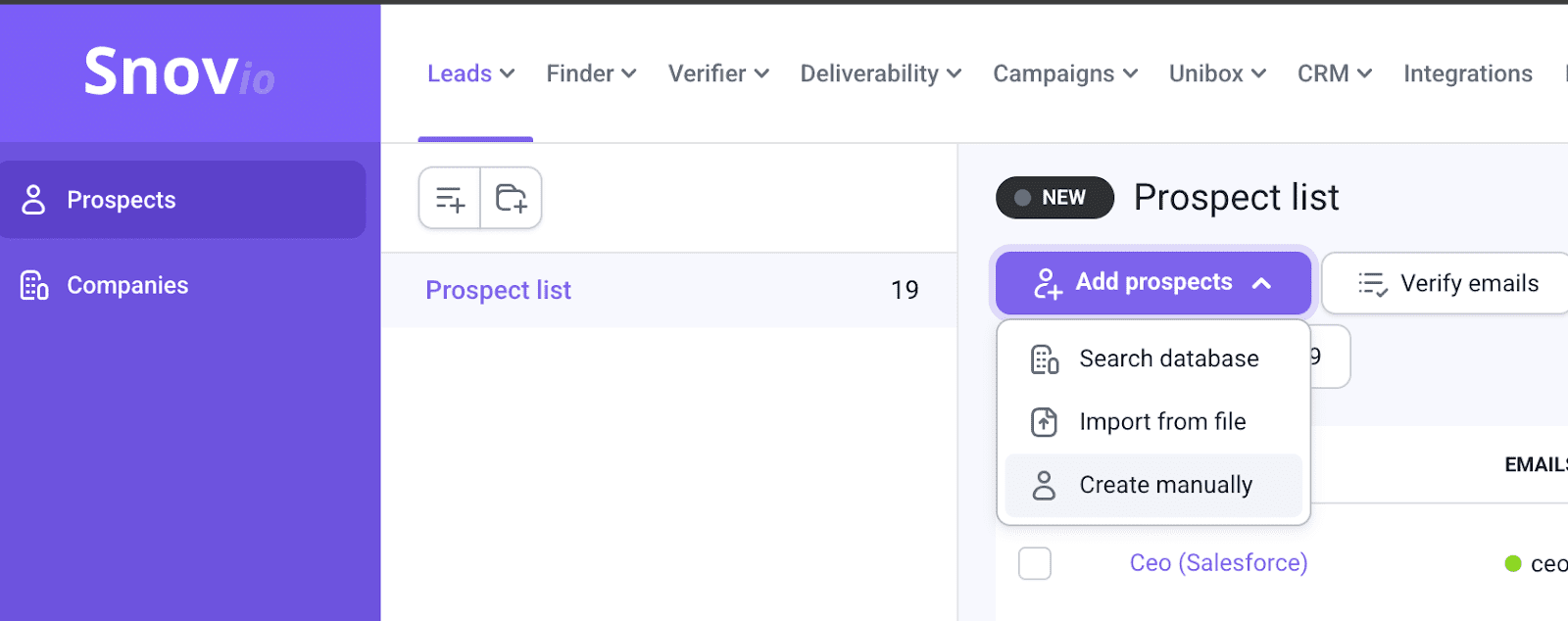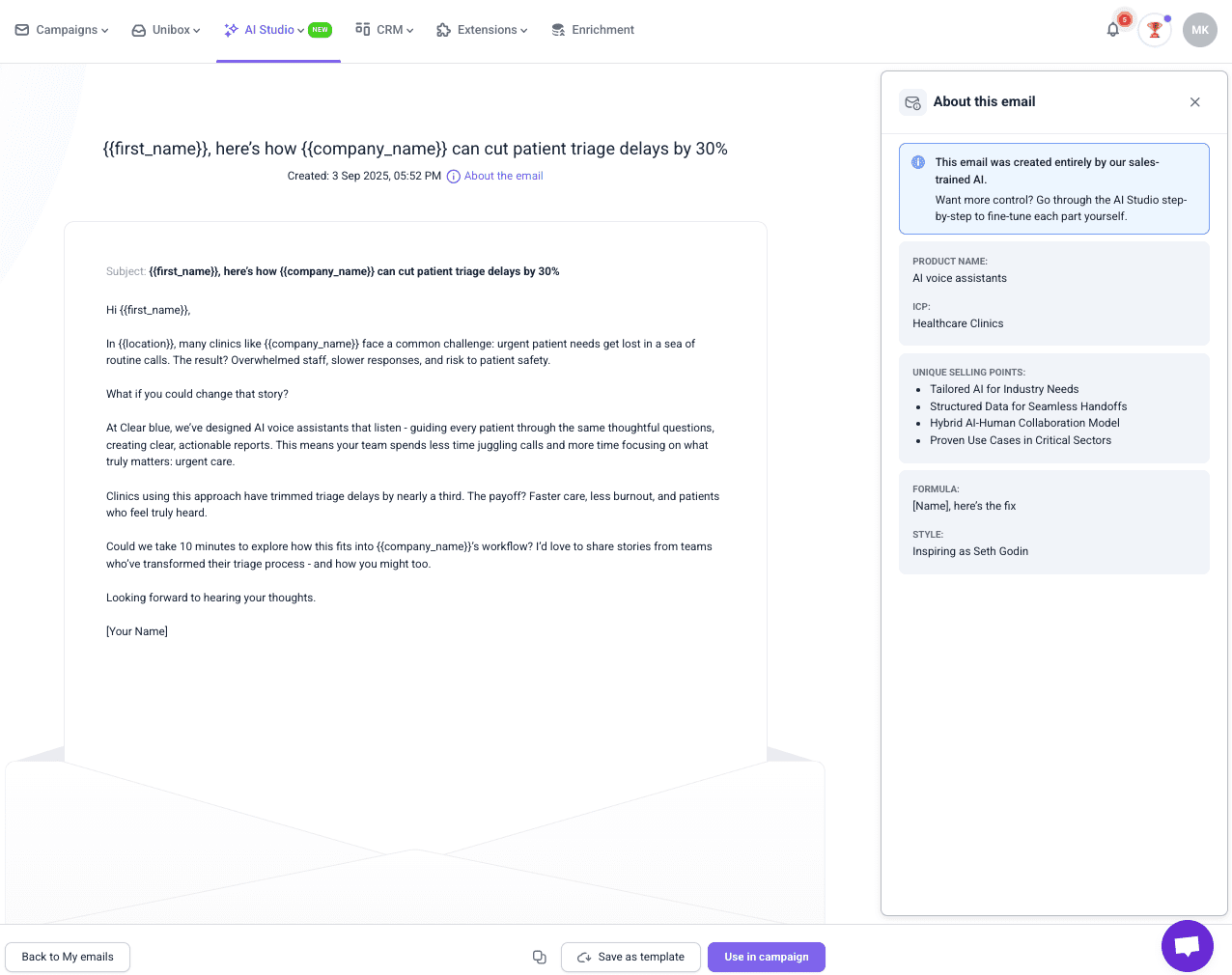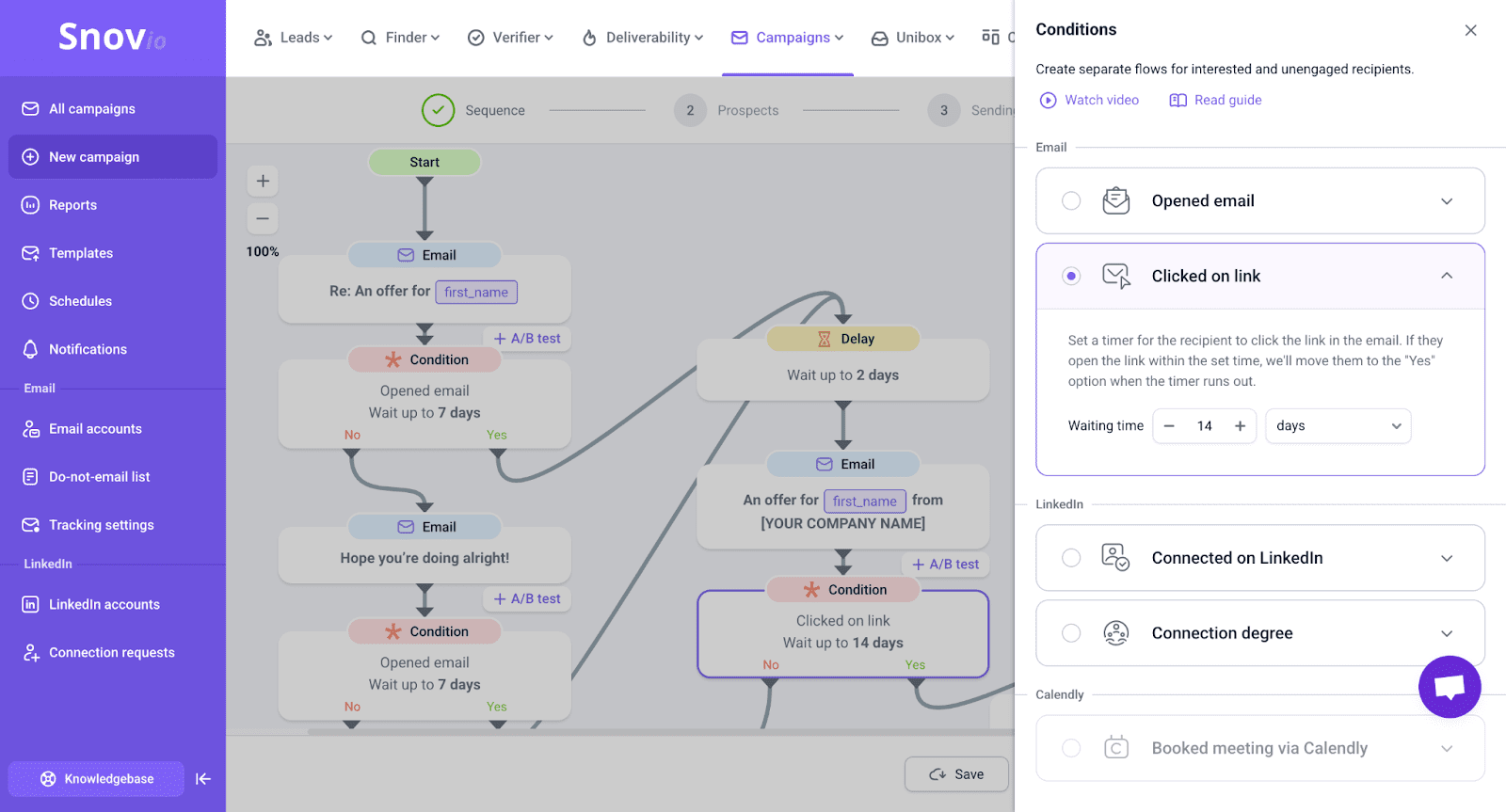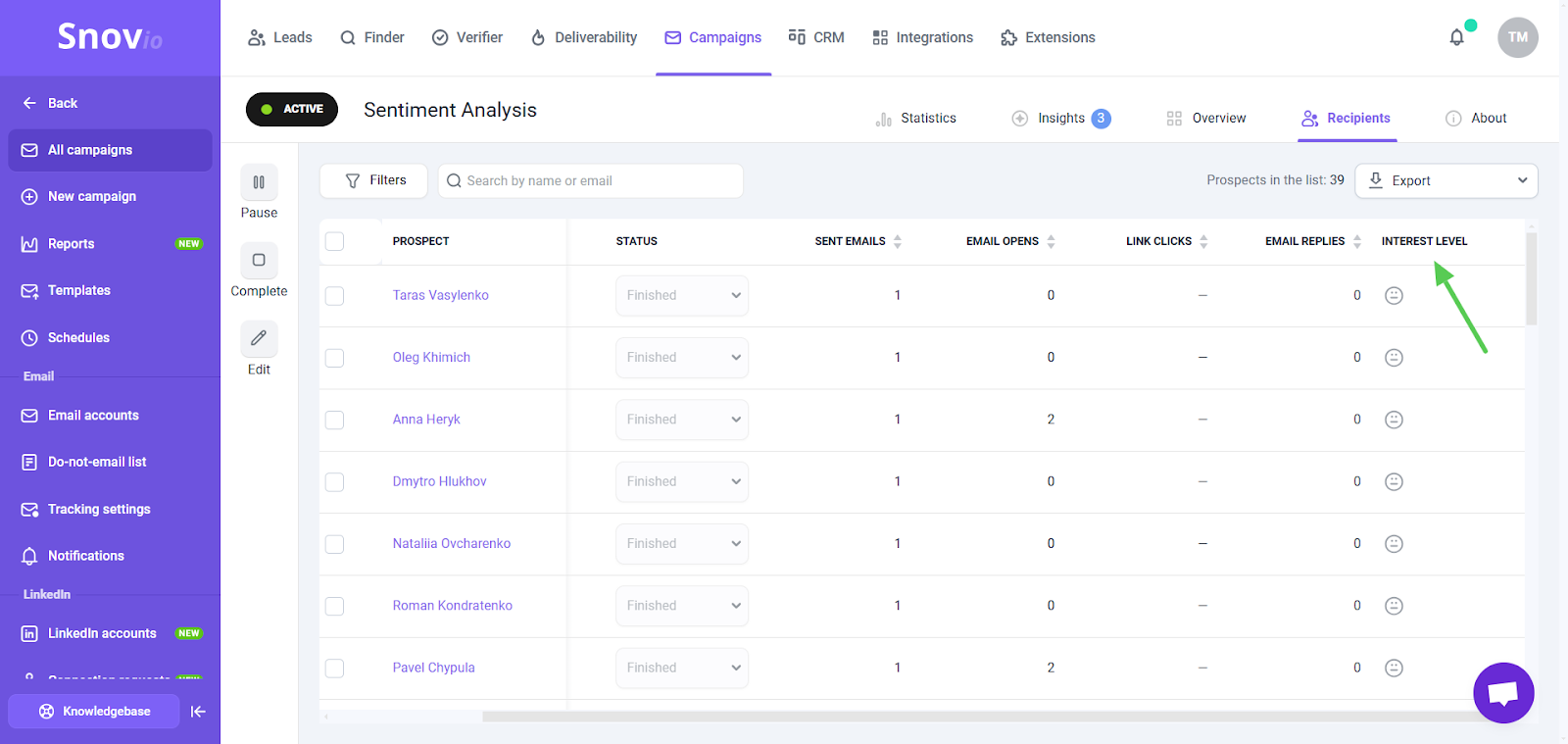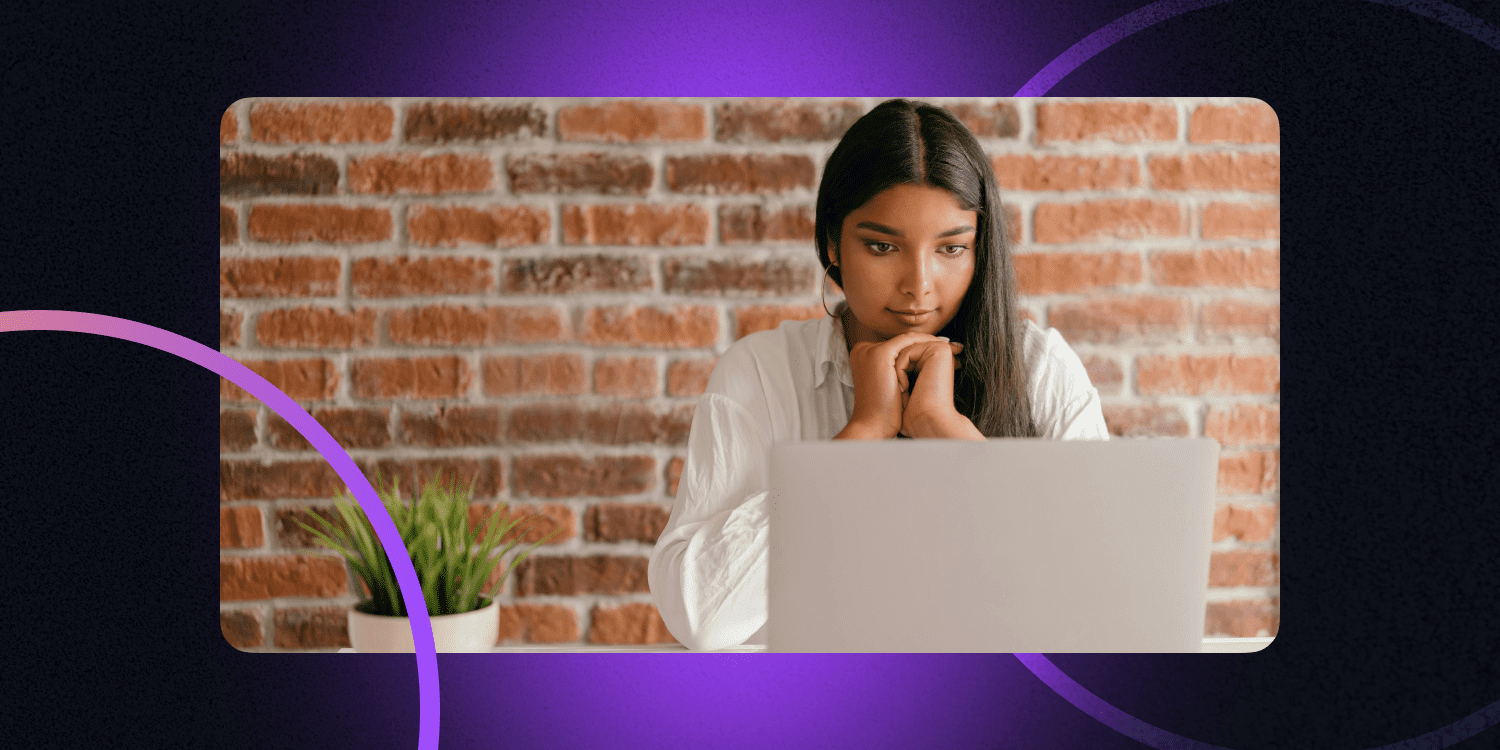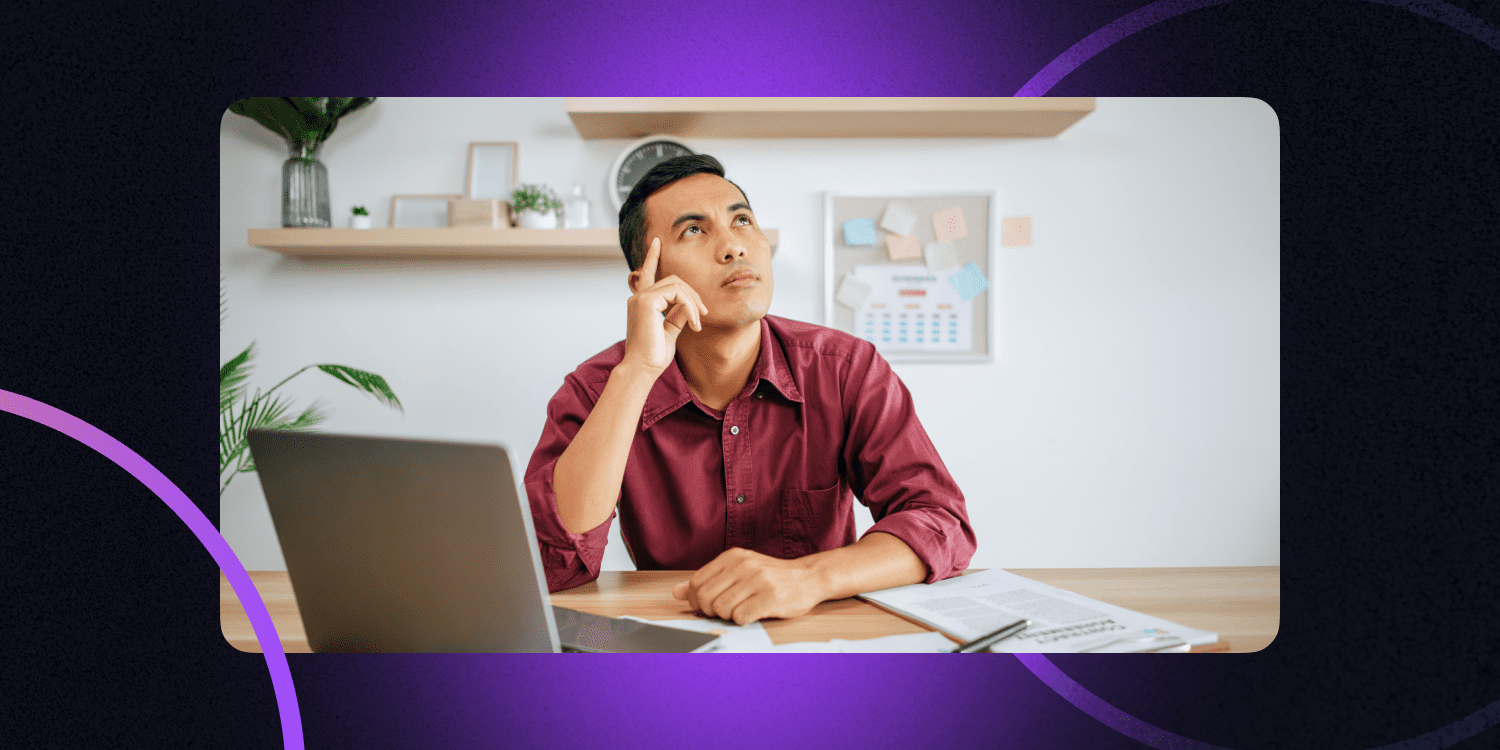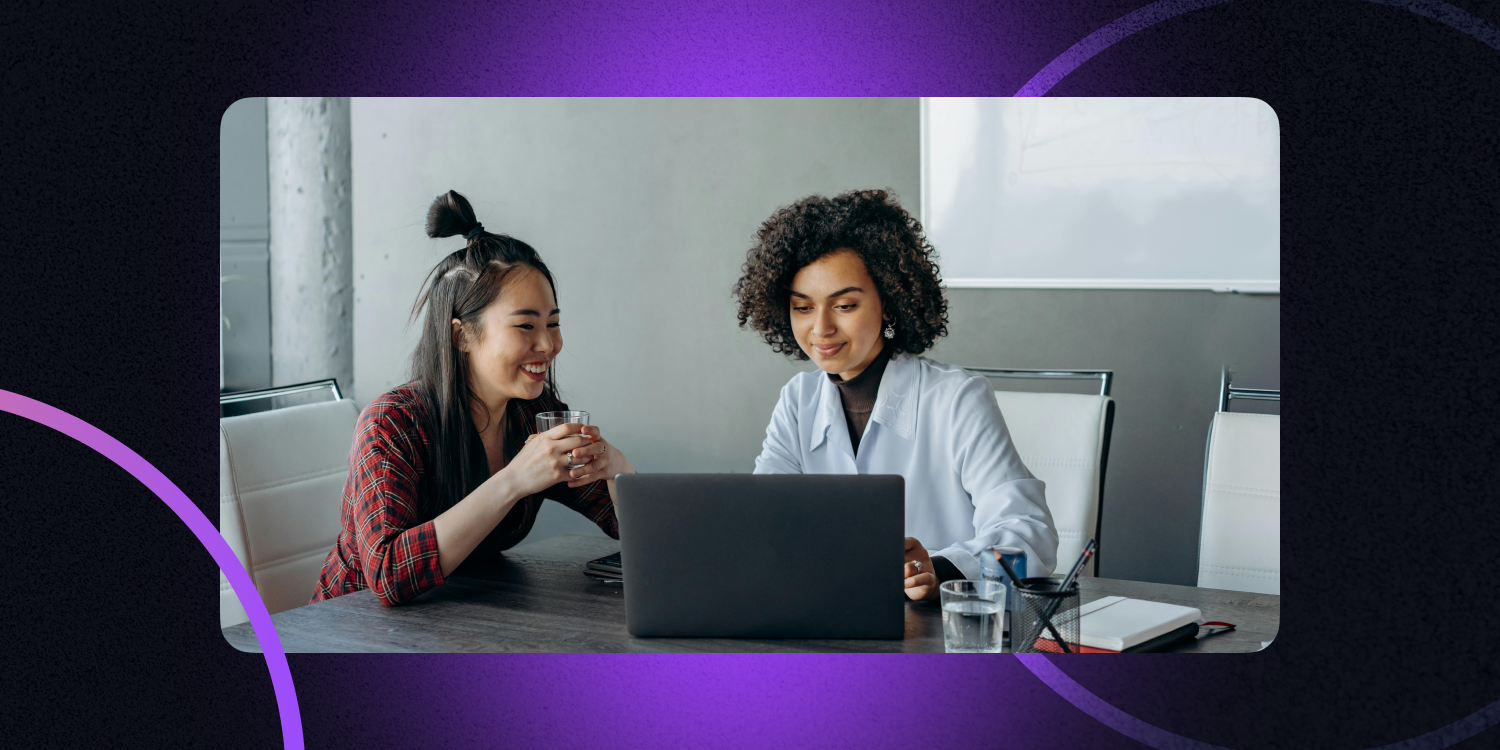TL;DR
LinkedIn marketing solutions provide ad formats tailored to various campaign objectives and audience preferences. They provide the following benefits:
- Accurate targeting by job title, industry, and seniority improves campaign performance.
- Existing content repurposing, such as blog posts or whitepapers, to save time and stay relevant.
- Performance tracking by matching metrics to campaign goals and optimizing weekly.
Use Snov.io’s LinkedIn marketing tool to automate follow-ups and run personalized campaigns that move leads toward conversion.
LinkedIn marketing solutions offer a powerful set of tools for B2B advertising; however, without a clear strategy in place, campaigns can easily fall short of their objectives. Ineffective audience segmentation, inappropriate ad formats, and unclear messaging often lead to a wasted budget.
In this article, we’ll break down what’s inside LinkedIn’s ad platform and provide guidance on how to make the most of it.
Key points of the article:
What are LinkedIn marketing solutions?
LinkedIn marketing solutions are a powerful suite of advertising tools that help businesses connect with professional audiences. At the center of it all is Campaign Manager, LinkedIn’s platform for building, launching, and tracking ad campaigns.
To get started, all you need is a LinkedIn profile, admin access to a LinkedIn Page, and a payment method.
LinkedIn ad formats overview
LinkedIn marketing solutions provide a range of ad formats to cater to various goals. Here’s a quick breakdown:
Sponsored content
These are native ads that appear in users’ LinkedIn feeds, available on both mobile and desktop. They look like regular posts but are labeled as “Promoted.”
Formats include:
- Single image LinkedIn ads: Strong visuals that grab attention.
- Video ads: Add motion and sound to boost engagement.
- Carousel LinkedIn ads: Tell a story or showcase multiple offers with swipeable cards.
- Document ads: Share downloadable content to educate or collect leads.
- Event ads: Promote webinars or events, with RSVP built right in.
- Thought leader LinkedIn ads: Feature posts from company leaders or industry experts.
- Click-to-message ads: Let people start a direct conversation from the feed.
- Connected TV ads: Reach professionals while they stream content.
- Article and newsletter ads: Drive traffic to long-form content right on LinkedIn.
Dynamic LinkedIn ads
These ads personalize the message using LinkedIn profile data, such as job title, company name, or profile picture, making it easier to connect at scale.
Text ads
These are simple, pay-per-click LinkedIn ads that show up on desktop. They can be great for quick campaigns or testing new messages without much setup.
Sponsored messaging
Instead of showing up in the feed, these ads land directly in someone’s LinkedIn inbox. There are two types:
- Message ads: One-off messages with a clear CTA.
- Conversation ads: Interactive flows that guide users through different paths based on their choices.
Together, these tools offer flexibility for marketers aiming to connect with decision-makers and business professionals within the LinkedIn ecosystem.
How to plan a LinkedIn B2B strategy that drives leads
Creating a LinkedIn B2B marketing strategy that actually works doesn’t have to be complicated. The key is finding the right balance between getting your brand noticed and turning prospects into customers through effective LinkedIn lead generation tactics.
Establish your LinkedIn marketing foundation
Before launching paid campaigns, make sure your company page is fully optimized. Use relevant keywords in the tagline and About section, keep content updates consistent, and highlight a clear value proposition that matches your ad messaging. This alignment reinforces credibility and improves ad performance across all campaign types.
|
💡Expert tip Build your brand while you advertise Your ads will work better when people already recognize your name. LinkedIn puts you directly in front of decision-makers having real business conversations, so make the most of it. Here are some essential tips:
Save time by using LinkedIn automation tools to stay consistent without burning out. |
Repurpose your best existing content for LinkedIn ads
Before creating new campaigns, review the content you already have. Your blog posts, case studies, white papers, and even successful organic social content can all be repurposed for LinkedIn ads. There’s no need to reinvent the wheel.
Focus on what makes LinkedIn ads work
Good LinkedIn B2B marketing comes down to getting these crucial elements right:
- Lead with strong visuals
Your image is what stops the scroll. Use visuals that are clearly branded, relevant, and professional. A good visual should reflect your offer and spark interest instantly. - Craft copy around pain points and goals
Effective ad copy starts with understanding what your audience is struggling with. Identify the specific pain points they face and tie them to a clear benefit. Instead of saying “Grow your business,” say “Save 10 hours a week by automating lead follow-ups.” Focus on outcomes they care about and keep your message short and actionable. - Mix ad formats to keep engagement high
Use single-image or video ads to grab attention at the top of the funnel. Carousels are ideal for comparing features or telling a short product story. Document ads work well when offering practical resources like checklists or case studies.
Varying your formats keeps the experience fresh and helps move leads toward conversion.
Pick the right campaign objective for your funnel stage
LinkedIn organizes its advertising around three main goals that match how B2B buyers actually make decisions:
- Awareness campaigns are about getting on people’s radar. You’ll measure success through impressions and reach, basically, how many people are seeing your brand.
- Consideration campaigns get people more engaged with your brand. Here, you’re looking at website visits, how people interact with your posts, and video views.
- Conversion campaigns focus on getting people to take meaningful action. This involves tracking key metrics, such as website conversions and lead form completions.
The trick with LinkedIn B2B marketing is not putting all your eggs in one basket. If you only focus on awareness, people might know your brand but never take the next step. However, if you only focus on conversions, you might overlook individuals who are not yet ready to buy but could become excellent prospects in the future.
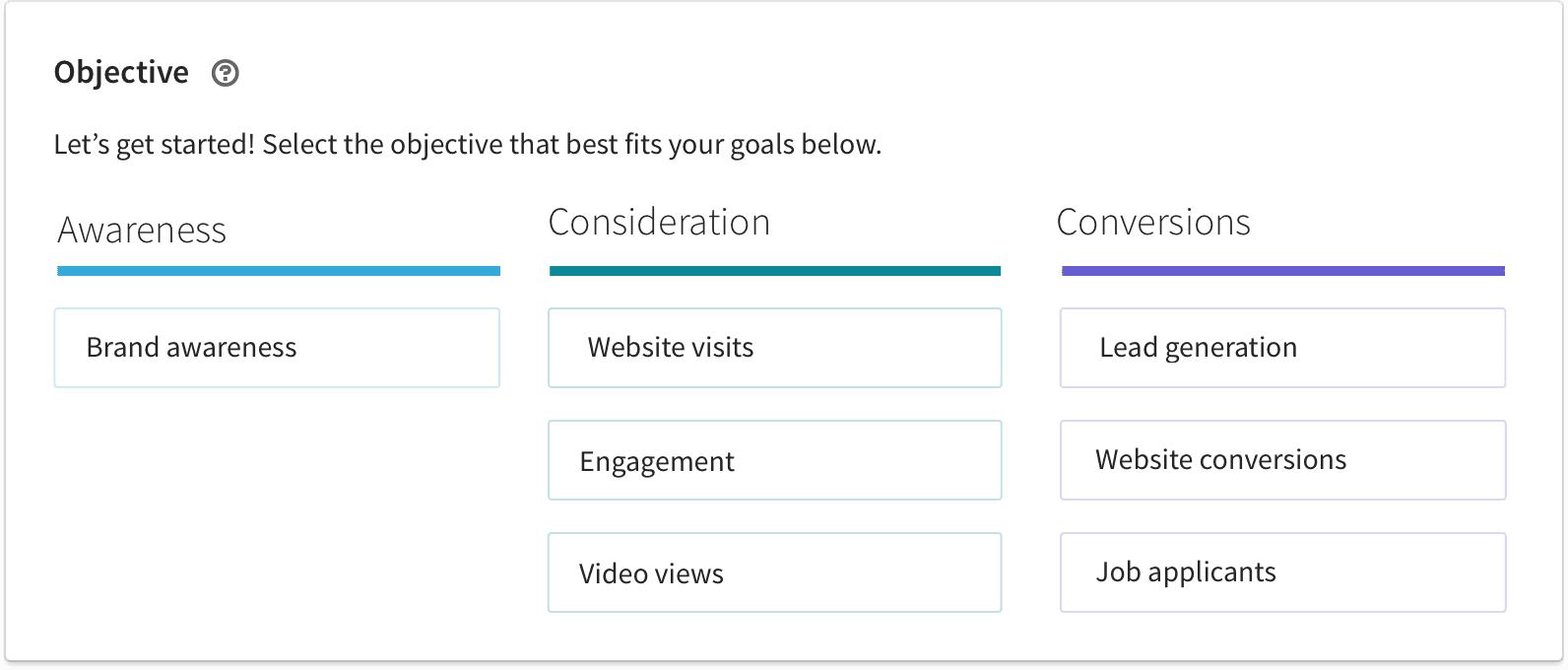
For most B2B companies, we recommend splitting your efforts 50/50 between brand awareness and conversion campaigns as a good starting point. Plus, you can always adjust this mix based on what you learn from your data.
Target the right people
LinkedIn’s key advantage is that users keep their profiles up to date, typically for networking or job hunting purposes. As a result, LinkedIn targeting data tends to be highly accurate.
Avoid trying to reach everyone at once. Instead, create separate campaigns for different ideal customer profiles, and you’ll almost always see better results. Be sure to target all key stakeholders involved in buying decisions, not just the final decision-maker.
Start broad, then narrow your focus as you learn what performs best. Always use at least two targeting criteria beyond location and language. Strong options include company size, industry, job titles, seniority levels, job functions, skills, or custom audience lists.
Choose the right bidding strategy for your budget
LinkedIn uses an auction system, but it’s not just about who bids the most. The platform also looks at how engaging your content is and how well your audience responds to it. This means good content can actually cost you less money.
You’ve got three main ways to handle bidding:
- Automated bidding lets LinkedIn’s system manage everything based on your campaign goals. It’s a good choice if you want to set it and mostly forget it.
- Cost cap bidding lets you set a maximum amount you’re willing to pay for each result. You gain some control while still allowing the system to optimize.
- Manual bidding gives you full control over how much you bid. This works well when you know exactly what different actions are worth to your business.
LinkedIn spreads your budget out over your campaign’s lifetime and adjusts spending based on when people are most active on the platform.
Launch campaigns and let them run without interference
Once you’ve set everything up, it’s time to create your actual LinkedIn ads. Upload your images or videos, add your headlines, and preview how everything will look on both desktop and mobile.
When you’re ready to launch, prepare several different ad versions. You don’t need completely different images for each one, just try changing up your headlines or copy instead. Having more variations gives LinkedIn’s system more chances to find the people who are most likely to respond to your message.
LinkedIn reviews new ads before they go live, usually within 24 hours. Once your campaigns are running, resist the urge to make changes right away. Let them run for at least a week so you can collect enough data to make smart decisions.
Track metrics that match your campaign goals
The metrics you track should always align with your campaign goals. For brand awareness, focus on impressions as well as cost per thousand impressions (CPM). For LinkedIn lead generation campaigns, monitor lead volume and cost per lead (CPL) to understand efficiency.
To gauge how your content is resonating, review engagement metrics like reactions, comments, shares, and new followers. These indicate whether your message is connecting with your audience.
Also, dig into demographic breakdowns to identify which audience segments are performing best, and consider creating targeted campaigns for those groups. Don’t forget to export your LinkedIn data regularly so you can analyze it alongside your broader marketing performance.
Review performance weekly and optimize regularly
The most effective LinkedIn B2B marketing strategies continually improve over time. Set up your baseline metrics from your first campaigns, then use those to spot what’s working and what isn’t.
Check in on your campaigns weekly. Review your bid ranges to ensure your budget is being spent effectively, and identify which creative elements are performing best across different audience segments.
Success with LinkedIn marketing solutions isn’t about launching the perfect campaign right from the start. It’s about consistently testing, learning, and improving while keeping that balance between awareness and conversion campaigns that builds long-term business growth.
|
📍Key takeaways Optimize your company page and use existing content to create LinkedIn ads. Engage your audience with clear copy, strong visuals, and varied ad formats. Balance brand awareness and conversion campaigns while targeting the right personas. Launch multiple ad versions, run them for at least a week before adjusting, and track key metrics. Regularly review and optimize for ongoing growth. |
How to maximize LinkedIn marketing solutions ROI using Snov.io
LinkedIn marketing solutions help businesses capture high-quality leads through targeted campaigns, but without a follow-up system, those leads often go cold.
Snov.io turns your LinkedIn efforts into a complete marketing funnel, helping you move leads from awareness to conversion through automated outreach and personalized nurturing.
Step 1: Capture qualified leads with LinkedIn lead gen forms
LinkedIn lead gen forms are a great entry point for capturing interest, but they’re only the beginning. We recommend quickly transferring those leads into your own system to maintain momentum and avoid delays.
Key actions:
Use LinkedIn lead generation forms in sponsored content and message ads.
Add leads directly into Snov.io for prompt nurturing.
Why this matters: This step ensures all top-of-funnel leads are captured in one place, verified, and ready for systematic follow-up rather than buried in spreadsheets.
Step 2: Organize and segment leads for targeted nurturing
Generic follow-ups don’t convert. A bit of thoughtful segmentation can make your outreach feel tailored and relevant to each lead’s context.
Key actions:
Sort contacts in Snov.io, use tags to label leads by source or funnel stage.
Match each tagged segment with email content that speaks to their likely goals or pain points.
Why this matters: A small amount of structure goes a long way. When your outreach feels intentional, prospects are more likely to stay engaged and move forward in the decision process.
Step 3: Automate personalized follow-ups with Snov.io campaigns
Once your leads are captured and segmented, timing and relevance become critical. Without a consistent follow-up flow, even qualified prospects can lose interest or forget your offer.
Snov.io maintains momentum by delivering personalized messages at the right time, based on each segment’s behavior and stage in the sales funnel.
Key actions:
Use personalization tokens to reference the LinkedIn ad or content they saw with the help of Dynamic Content and Spintax.
Alternatively, you can generate highly personalized copy with the AI email builder based on your ideal customer profile.
Set email campaigns with smart delays and conditions based on email engagement.
Track responses with AI Sentiment Analysis to prioritize leads.
Why this matters: Leads who aren’t ready to buy immediately still need nurturing. Automated, relevant sequences keep them engaged until they’re ready to take the next step. Plus, AI Sentiment Analysis shows whether replies are positive, neutral, or negative, so you can adjust follow-ups accordingly.
Key takeaways
LinkedIn marketing solutions help B2B businesses find and connect with their ideal customers. Think of it as your toolkit for running smart ads that actually deliver results, whether you’re looking for brand awareness or ready-to-buy leads.
The key is knowing which ad types work for your goals, then testing what clicks with your audience. Once you start generating leads on LinkedIn, try Snov.io to automate your follow-up process to keep prospects engaged.
